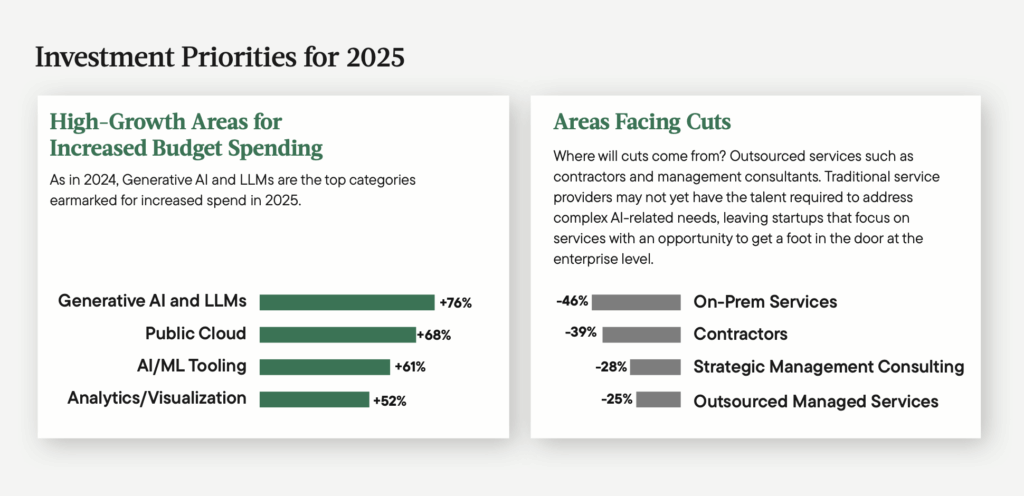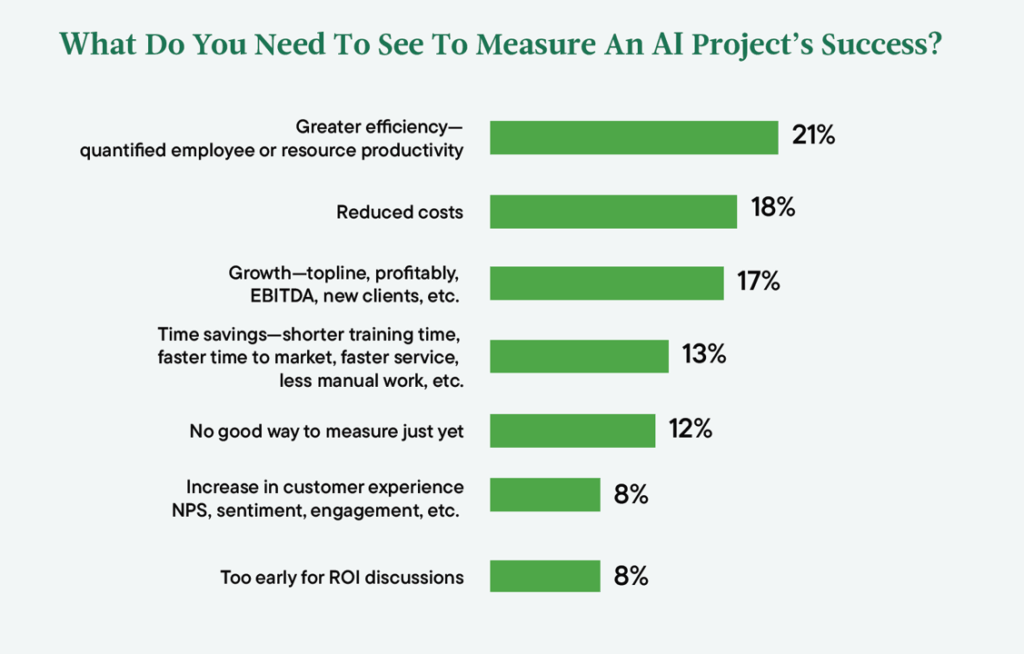


Our annual CIO survey is here! Each year, we survey 200 Fortune 2000 IT leaders and tap into the expertise of the Mayfield IT Leadership Network, a community of over 3,500 CIOs, CISOs, and CTOs. Their collective experience offers a unique view into how leading organizations navigate this transformation.
2024 marked a turning point for enterprise AI, shifting from – experimentation to execution. Yet this swift adoption presents IT leaders with a complex challenge: integrating AI initiatives—some mandated from above—with existing strategic priorities and infrastructure. Our most recent survey focuses on the evolving AI landscape and the challenges and opportunities ahead.
While Gen AI projects represented a modest 1–2% of IT spending in previous years, our survey reveals AI investments are set to more than double by 2025, reaching 4-5% of total IT budgets. But it’s not just about the money. AI has moved beyond the experimental phase and into the mainstream, with 68% of organizations already using AI in production. Even more telling, over a third of these deployments directly impact revenue or customer experience.
The budget outlook for 2025 is notably positive, with 77% of leaders expressing optimism about budget increases. Gartner’s projected 9.3% growth in IT spending appears well-aligned with our findings.
Organizations are abandoning custom applications and private data centers in favor of public clouds and pre-built solutions. This shift reflects both the growing maturity of available solutions and the increasing costs of maintaining custom infrastructure.
While established vendors (e.g., Salesforce, ServiceNow, Microsoft, Workday, and SAP) still dominate Al implementations with preexisting agreements, CIOs are underwhelmed by these offerings. Declining user satisfaction, rising costs, and complex implementation requirements are creating openings for new market entrants.
Decentralized AI governance is the current norm, with CIOs leading AI initiatives in 43% of organizations, while only 10% have appointed Chief AI Officers. This often leads to business units driving AI use cases and relying on IT for execution. However, data remains a major hurdle, with 42% of IT leaders citing governance and security as top concerns. Before deploying AI, CIOs must address data security, privacy, access, pipelines, labeling, and more.
The story that emerges from our survey isn’t just about technology adoption—it’s about organizational transformation. IT leaders are navigating a complex balance between leveraging existing vendor relationships and exploring new solutions while managing expanding budgets and evolving governance structures. Here are some highlights of how leading organizations navigate key areas of their AI transformations.
Our findings align with Gartner’s projected 9.3% increase in global IT spending to $5.74 trillion, with 77% of IT leaders expressing optimism about budget growth in 2025. Leaders predict greater spending on generative AI and large language models and see potential cuts in outsourced services.
Our survey reveals that the share of IT budgets allocated to AI is set to grow significantly. While Gen AI projects represented a modest 1–2% of IT spending in previous years, our survey reveals plans for significant expansion. Organizations expect to more than double their AI investment by 2025, reaching 4–5% of total IT budgets—a clear signal that AI is moving from experimental to essential.

Early use cases for AI are remarkably broad. However, several core areas have emerged as go-to applications, including customer service, general productivity, developer productivity, and content synthesis.
With real investments come real expectations. One-third of survey respondents require hard ROI metrics (in terms of cost savings or top-line revenue growth) to justify AI investments. In contrast, others accept softer metrics or are still developing measurement frameworks.
To ensure the success of their AI initiatives, organizations must:

